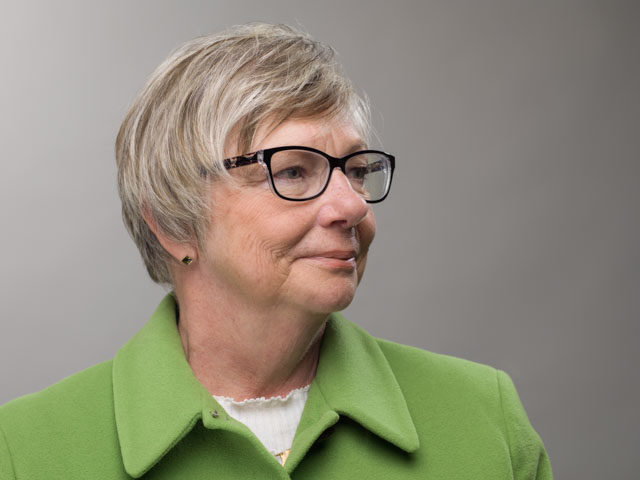
Ruth Bishop
Education Program Officer
Grand Rapids Community Foundation
Student Resources + FAQs
We know the financial aspects of college can be confusing. We're here to help.
Here are answers to a few of our most frequently asked questions.
We understand the delays in the FAFSA process this year are presenting extra challenges.
The majority of Community Foundation scholarship donors have elected to make need one of the considerations during the selection process; however, the Cayvan String Instrument; Englehardt (Lowell), and the Grand Rapids Combined Theatre Scholarships are not based primarily on need.
Students/families seeking financial assistance should begin the process by completing the Free Application for Federal Student Aid (FAFSA) form. Through detailed information provided on the application, a Student Aid Report (SAR) is issued. Information from the SAR is used to complete financial questions on the application.
Yes, a helpful tool for estimating financial aid and calculating your estimated EFC and financial need is found at https://studentaid.gov/aid-estimator. Once you enter your student income, family income, and estimated school costs, it will calculate an amount based on US Department of Education EFC formulas.
Complete the application and provide the amount you and your family will contribute after estimating your EFC at www.finaid.org/calculators.
Yes. Occasionally a student may be selected to receive a scholarship from more than one Community Foundation scholarship fund.
Yes, the majority of Grand Rapids Community Foundation scholarships are one-time awards. You may submit a new application each year if you continue to fit the scholarship’s criteria. If you received a renewable scholarship, you will be notified by the Community Foundation staff and reminded to re-apply.
Provide financial information for a college that you have been accepted to and that has, or will receive, your financial aid (FAFSA) information. If you are still undecided between a public and private institution, provide information for the college with the higher costs.
Each statement of aspirations and goals is read and reviewed as part of the selection process. It is important that the applicant address each point outlined in the Personal Goals section of the application. See below for tips on this part of your application.
Most awards range from $1,000 to $5,000, depending on the income available in each fund. The average award is $1,500. Checks are made payable to and mailed directly to the college once you have accepted the scholarship award.
Yes. Most scholarships are for any college or university in the U.S.
Since most of the Community Foundation scholarships are need-based, it Is best to complete the FAFSA. Applications are not considered complete without financial information. Self reported income will be accepted if you are ineligible to file a FAFSA.
The Community Foundation supports a formula created by Congress. It is based on the premise that it is a parent's and student's joint responsibility to provide funds for higher education from their income and assets (to the extent that they are able). As a general rule, a student is considered independent when she or he turns 24 years of age, marries, is primary provider for a dependent child, or is a veteran
Completing the general online application enters you in the selection process for more than 80 scholarship funds.
There are other factors that are considered when we determine need such as the number in the family and the cost of the college. As a general rule, if your Expected Family Contribution (EFC) as determined by the FAFSA is more than the cost of attendance at the school, your student will not qualify for any of the Foundation's need based scholarships. Likewise, if the school will be providing a large sum in merit or other aid, your student probably will not qualify for Foundation need based scholarships.
All applicants will be notified of decisions by email to the email address provided on their application by the second week in May.
A FEW TIPS
Our scholarship application asks for a statement of 500 words or less indicating reasons for your choice of college, chosen course of study, career goals and plans for financing your college education. Please also include information regarding your past activities that benefited the community. This is a crucial part of the selection process.
The personal statement may be the hardest part of your application to complete. It is also where you can stand out from the crowd. The key to writing a strong statement is to be personal and specific. Include details you feel comfortable sharing about yourself so the reader can get to know who YOU are and what you stand for. Be truthful and honest.
Scholarship selection committees may have hundreds of statements to review. It is YOUR job to get their attention. Remember to:
For additional guidance and to review sample statements, we recommend visiting College Board.
Check These Out
Bestcolleges.com streamlines the process of gaining financial aid for college with a comprehensive scholarship database, and step-by-step guide to the FAFSA.
Campus Pride provides information and a college search for colleges in the U.S. with resources, programs and services to support LGBTQ and ally students.
College Navigator provides an easy resource for you to compare all colleges and their costs in a uniform format.
FAFSA is the U.S. Department of Education FREE Application for Federal Student Aid Web Site.
FastWeb matches students to scholarships, a source of local, national, and college-specific scholarships.
Grand Rapids Center for College Success (T2C Studio) has resources to help local students; from application deadlines to paying for college.
KnowHow2Go helps you understand the steps you need to take to make your college dreams a reality.
MIStudentAid provides information and related links about financial aid specifically for Michigan students.
Scholarships is a popular, free college scholarship search and financial aid information. When you create a personal profile, they will present you with complete and accurate info on the most relevant, attainable college scholarship awards.

Education Program Officer
Grand Rapids Community Foundation

Scholarship Coordinator
Grand Rapids Community Foundation
English, Español